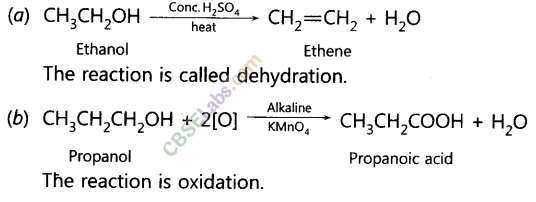NCERT Exemplar Class 10 Science Chapter 4 Carbon and its Compounds
NCERT Exemplar Class 10 Science Chapter 4 Carbon and its Compounds are part of NCERT Exemplar Class 10 Science. Here we have given NCERT Exemplar Class 10 Science Chapter 4 Carbon and its Compounds.
NCERT Exemplar Class 10 Science Chapter 4 Carbon and its Compounds
Short Answer Questions
Question.1 Draw the electron dot structure of ethyne and also draw its structural formula.
Answer.
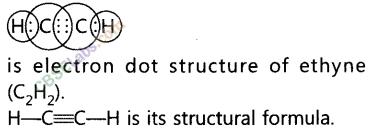
Question.2 Write the names of the following compounds.
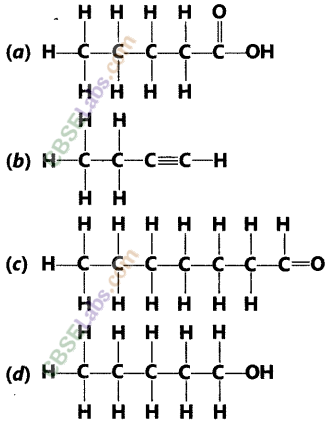
Answer.
(a) Pentanoic acid (b) 1-Butyne
(c) Heptanal (d) 1-Pentanol
Question.3 Identify and name the functional groups present in the following compounds.
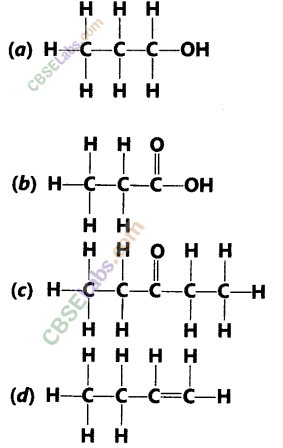
Answer.
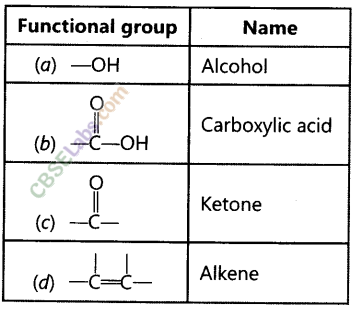
Question.4 A compound X is formed by the reaction of a carboxylic acid C2H4O2 and an alcohol in presence of a few drops of H2SO4. The alcohol on oxidation with alkaline KMnO4 followed by acidification gives the same carboxylic acid as used in this reaction. Give the names and structures of
(a) carboxylic acid, (6) alcohol and (c) the compound X. Also write the
reaction.
Answer.
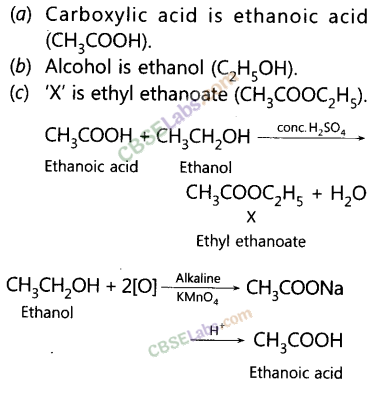
Question.5 Why detergents are better cleansing agents than soaps? Explain.
Answer. It is because detergents form lot of lather even with hard water.
Hard water contains Ca2+ and Mg2+ ions which react with soap to form insoluble salts of calcium and magnesium called scum and soap goes waste. Detergents do not form insoluble compounds with Ca2+ and Mg2+ ions, therefore, these are more effective.
Question.6 Intake of small quantity of methanol can be lethal. Comment.
Answer. Methanol is oxidised to methanal in liver.’ Methanal is highly reactive and good reducing agent. It causes protoplasm to coagulate. It also affects optic nerve and leads to blindness.
Question.7 A gas is evolved when ethanol reacts with sodium. Name the gas evolved and also write the balanced chemical equation of the reaction involved.
Answer. Hydrogen gas is evolved.

Question.8 Catenation is the ability of an atom to form bonds with other atoms of the same element. It is exhibited by both carbon and silicon. Compare the ability of catenation of the two elements. Give reasons.
Answer. Carbon shows catenation to large extent as compared to silicon as well as any other element due to smaller size of carbon. C—C bond is stronger than Si-Si bond because Si is larger in size, forms wea’ker bond.
Question.9 Match the reactions given in Column (A) with the names given in Column (B).
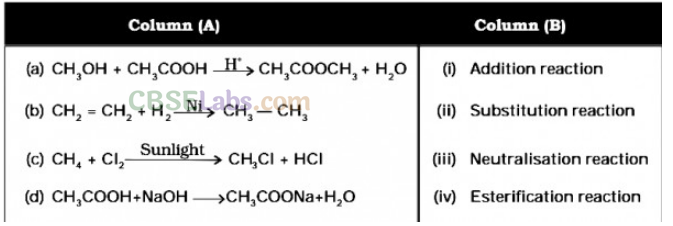
Answer.
(a) – (iv) is esterification reaction because ester is being formed from carboxylic acid and alcohol.
(b) – (i) is addition reaction as hydrogen is being added.
(c) – (ii) is substitution reaction because hydrogen of methane is being substituted by
chlorine atom.
(d) – (iii) is neutralisation reaction because acetic acid reacts with sodium hydroxide to form salt and water.
Question.10 What is the role of metal or reagents written on arrows in the given chemical reactions?

Answer.
(a) Ni is used as a catalyst.
(b) Cone. H2SO4 acts as a dehydrating agent.
(c) Alkaline KMnO4 is an oxidising agent.
Long Answer Questions
Question.11 (a) Write the formula and draw electron dot structure of carbon tetrachloride.
(b) What is saponification? Write the reaction involved in this process.
Answer.

Question.12 A compound ‘C’ (molecular formula, C2H4O2) reacts with Na-metal to form a compound ‘R’ and evolves a gas which burns with a pop sound. Compound ‘C’ on treatment with an alcohol ‘A’ in presence of an acid forms a sweet smelling compound ‘S’ (molecular formulaC3H6O2). On addition of NaOH to ‘C’, it also gives ‘R’ and water. ‘S’ on treatment with NaOH solution gives back ‘R’ and ‘A’.
Identify ‘C’, ‘R’, ‘A’, ‘S’ and write down the reactions involved.
Answer.
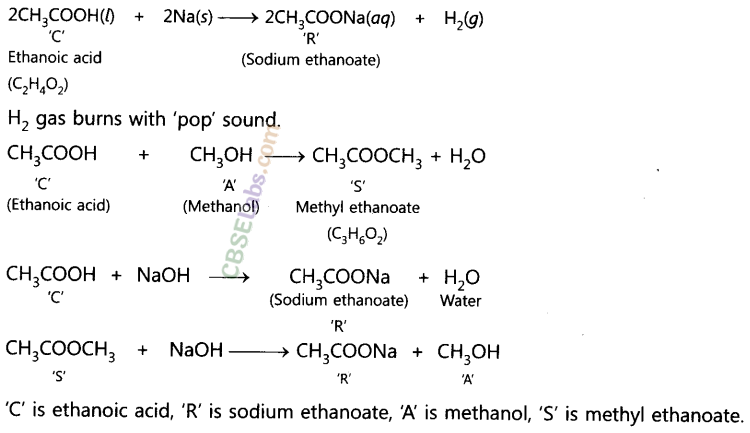
Question.13 How would you bring about the following conversions? Name the process and write the reaction involved.
(a) Ethanol to ethene
(b) Propanol to propanoic acid
Answer.
